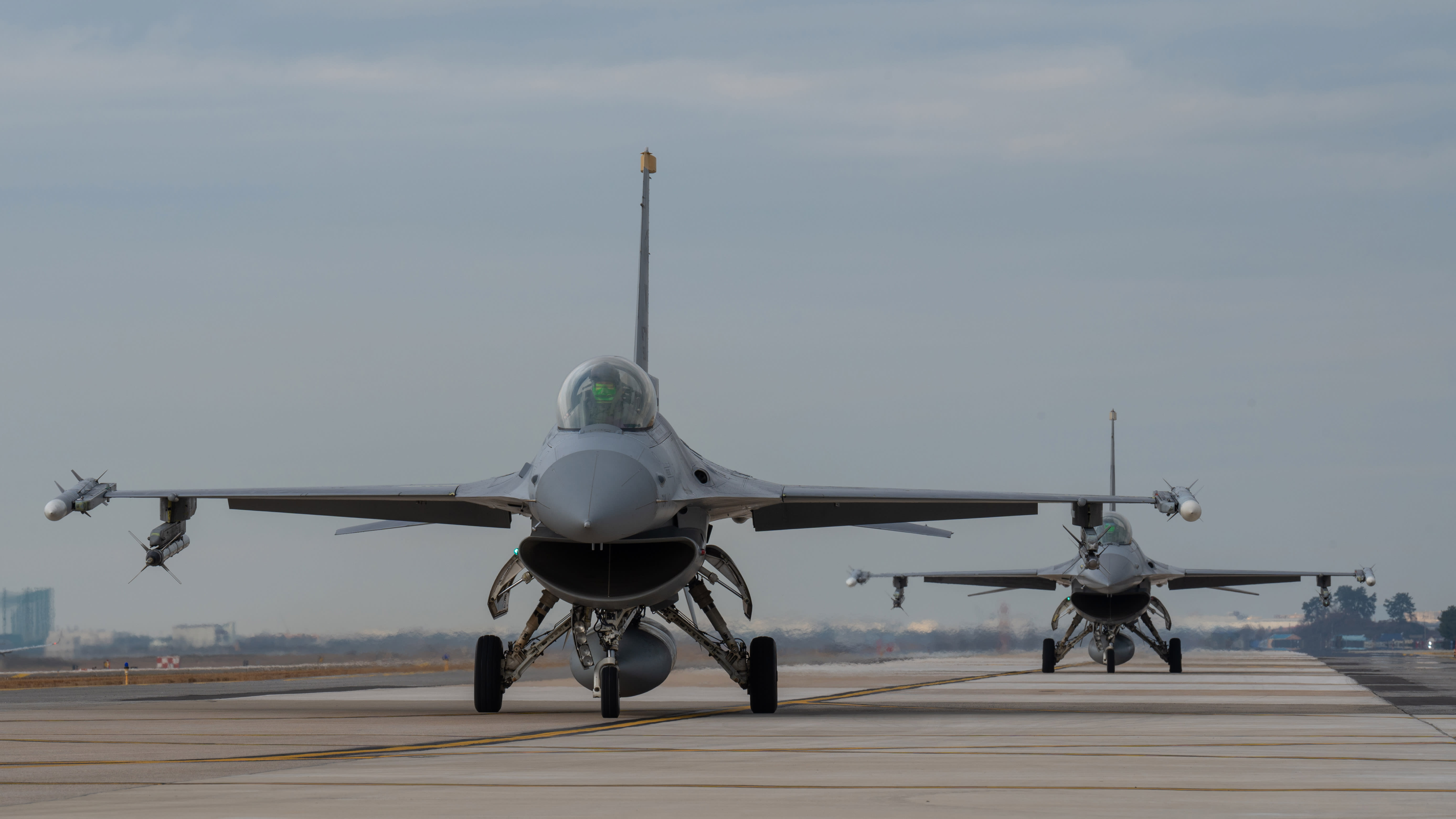Strategic Realignment: The Air Force's Tactical Response to North Korean Tensions
 The Tech Times
The Tech Times
In a move that underscores the volatile security landscape of the Korean Peninsula, the United States Air Force has reallocated F-16 fighter jets closer to North Korea. This strategic redeployment is part of a newly formed "super squadron," designed to bolster defenses against potential threats from Pyongyang, whose aggressive posturing has been a persistent concern for regional stability.
The decision to reposition these aircraft is not merely a reactionary measure but a calculated enhancement of the U.S. military's deterrence capabilities. It reflects the broader geopolitical dynamics where military readiness and adaptability play crucial roles in maintaining peace and preventing escalation.
Historical Context: A Legacy of Tension
The Korean Peninsula has long been a focal point of military strategy and international diplomacy. The Korean War (1950-1953) ended with an armistice rather than a peace treaty, leaving North and South Korea technically still at war. Over the decades, the North's pursuit of nuclear capabilities and ballistic missile technology has often been met with international condemnation and sanctions.
The modern tension traces back to the early 2000s when North Korea withdrew from the Nuclear Non-Proliferation Treaty, subsequently conducting a series of nuclear tests that have intensified global scrutiny. In response, the U.S. has maintained a robust military presence in South Korea and across the Asia-Pacific region, underscoring its commitment to defending its allies and preserving stability.
The Role of F-16s in Modern Warfare
Fighter jets like the F-16, known for their versatility, agility, and advanced avionics, play a critical role in modern military operations. Their ability to perform various missions, from air superiority to ground attack, makes them a formidable asset in any theater of operations.
The deployment of these aircraft into a "super squadron" is a testament to their strategic importance. It serves as both a deterrent and a rapid-response force capable of addressing potential provocations swiftly. By moving these F-16s closer to North Korea, the U.S. enhances its air power's operational reach, ensuring a quicker and more effective response should the need arise.
The Implications for Regional Security
This realignment of military assets is not without its implications. For one, it sends a clear message to North Korea and other regional actors about the U.S.'s unwavering commitment to its defense posture in East Asia. Moreover, it reassures allies like South Korea and Japan of America's readiness to counter any threats that may emerge.
However, such moves often stir regional tensions, prompting North Korea to ramp up its own military preparations. This cycle of action and reaction can lead to an arms race, heightening the risk of accidental or deliberate conflict.
Conclusion: Balancing Deterrence and Diplomacy
As the U.S. Air Force strengthens its defensive capabilities on the Korean Peninsula, the challenge lies in balancing military preparedness with diplomatic efforts to de-escalate tensions. While the presence of a formidable air squadron acts as a deterrent, long-term peace and stability will ultimately depend on dialogue and negotiation.
The international community's role in facilitating communication and reducing misunderstandings cannot be overstated. As history has shown, military might is but one component of a comprehensive strategy to ensure security in one of the world's most complex geopolitical hotspots.
In essence, the redeployment of F-16s is a strategic maneuver aimed at maintaining equilibrium in a precarious environment. It reflects both the enduring challenges and the dynamic nature of defense planning in the face of evolving threats.
Source: Air Force moves F-16s closer to North Korea in new ‘super squadron’
Subscribe to my newsletter
Read articles from The Tech Times directly inside your inbox. Subscribe to the newsletter, and don't miss out.
Written by
